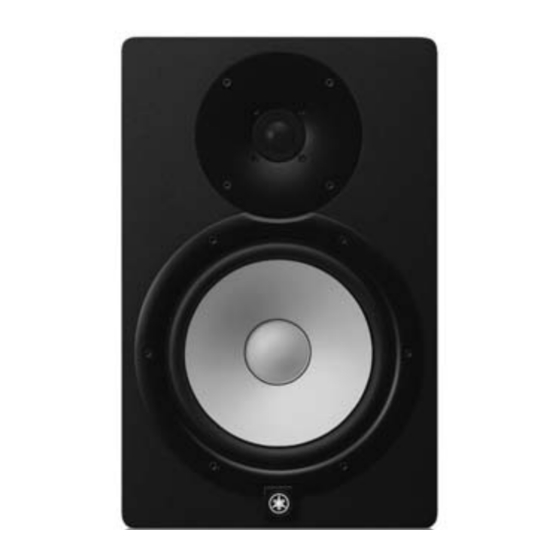NOTICE
To avoid the possibility of malfunction/ damage to the product,
damage to data, or damage to other property, follow the
notices below.
Handling and maintenance
• Do not use the device in the vicinity of a TV, radio, AV
equipment, mobile phone, or other electric devices. Otherwise,
the device, TV, or radio may generate noise.
• Do not expose the device to excessive dust or vibration, or
extreme cold or heat (such as in direct sunlight, near a heater,
or in a car during the day), in order to prevent the possibility of
panel disfiguration, unstable operation, or damage to the
internal components.
• Do not place vinyl, plastic or rubber objects on the device,
since this might discolor the panel.
• When cleaning the device, use a dry and soft cloth. Do not use
paint thinners, solvents, cleaning fluids, or chemical-
impregnated wiping cloths.
• Condensation can occur in the device due to rapid, drastic
changes in ambient temperature—when the device is moved
from one location to another, or air conditioning is turned on or
off, for example. Using the device while condensation is
present can cause damage. If there is reason to believe that
condensation might have occurred, leave the device for
several hours without turning on the power until the
condensation has completely dried out.
• During extreme changes in temperature or humidity,
condensation may occur and water may collect on the surface
of the device. If water is left, the wooden parts may absorb the
water and be damaged. Make sure to wipe any water off
immediately with a soft cloth.
• Do not place the speaker face down.
• These speakers should be used vertically, not laid on their side.
• Avoid touching or allowing objects to come in contact with the
speaker diaphragms.
• Air blowing out of the bass reflex ports is normal, and often
occurs when the speaker is handling program material with
heavy bass content.
• Always turn the power off when the device is not in use.
Connectors
• XLR-type connectors are wired as follows (IEC60268 standard):
pin 1: ground, pin 2: hot (+), and pin 3: cold (-).
Connectable cables
XLR type
XLR type connectors are widely used in professional audio
equipment and installations. The XLR type connectors
provided on the HS series speakers are primarily intended for
use with balanced connections.
Pin 2: hot (+)
Pin 3: cold (-)
Pin 1: ground
Pin 1: ground
Pin 3: cold (-)
Pin 2: hot (+)
Phone type
Phone type connectors can be used for both unbalanced and
balanced connections.
Cables fitted with TRS (tip, ring, sleeve) phone plugs are
necessary for balanced connections to the HS series
speakers. The construction of TRS phone plugs is basically
the same as stereo phone plugs.
For unbalanced connections, connect standard mono phone
plug cables to the HS speaker phone connectors.
RCA pin
Source devices that only have RCA pin type output
connectors can be connected via RCA pin plug to phone plug
conversion cables (cables with an RCA pin plug on one end
and a phone plug on the other). Connections using RCA pin
plug to phone plug conversion cables are unbalanced.
Balanced connections:
noise picked up from external sources. Balanced
connections allow for longer cable runs that would
probably otherwise result in more noise being picked up.
Unbalanced connections:
connect electronic musical instruments and guitars, etc.,
to amplification equipment. If your cable runs do not
extend past one or two meters, unbalanced cables can
probably be used without any problems.
IMPORTANT NOTICE FOR THE UNITED KINGDOM
Connecting the Plug and Cord
WARNING: THIS APPARATUS MUST BE EARTHED IMPORTANT.
The wires in this mains lead are coloured in accordance with
the following code:
GREEN-AND-YELLOW : EARTH
BLUE
BROWN
As the colours of the wires in the mains lead of this apparatus
may not correspond with the coloured markings identifying the
terminals in your plug proceed as follows:
The wire which is coloured GREEN-and-YELLOW must be
connected to the terminal in the plug which is marked by the
letter E or by the safety earth symbol
GREEN-and-YELLOW.
The wire which is coloured BLUE must be connected to the
terminal which is marked with the letter N or coloured BLACK.
The wire which is coloured BROWN must be connected to the
terminal which is marked with the letter L or coloured RED.
HS8/HS7/HS5/HS8I/HS7I/HS5I/HS8S Owner's Manual
Tip: hot (+)
Ring: cold (-)
Sleeve: ground
Tip: hot (+)
Sleeve: ground
These effectively cancel
Commonly used to
: NEUTRAL
: LIVE
or colored GREEN or
(3 wires)
5

